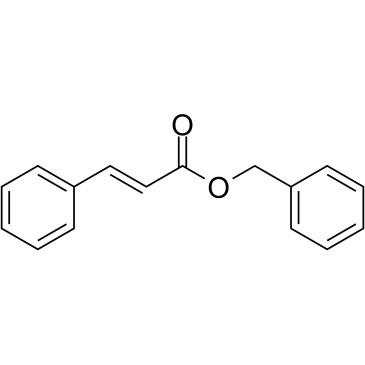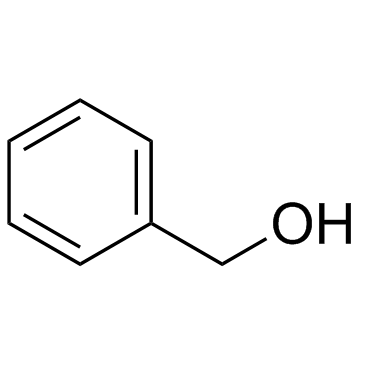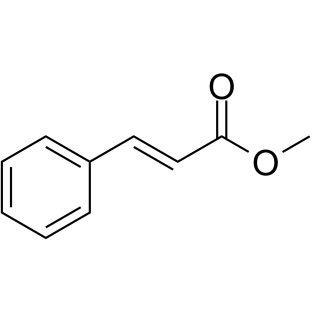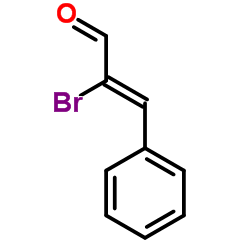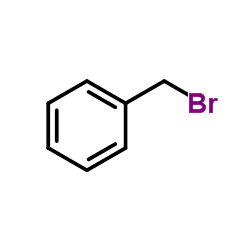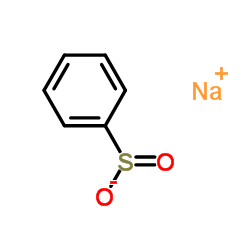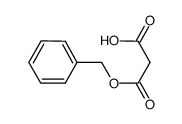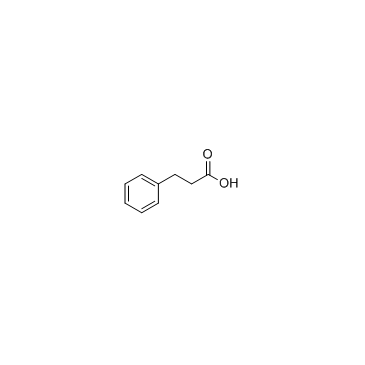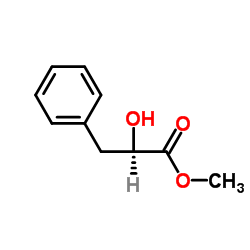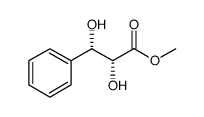103-41-3
| Name | Benzyl cinnamate |
|---|---|
| Synonyms |
Cinnamic Acid Benzyl Ester
benzyl trans-3-phenylpropenoate 2-Propenoic acid, 3-phenyl-, phenylmethyl ester, (E)- FEMA 2142 Benzyl (2E)-3-phenyl-2-propenoate benzyl (2E)-3-phenylprop-2-enoate Benzyl Alcohol Cinnamate 2-Propenoic acid, 3-phenyl-, phenylmethyl ester, (2E)- Benzyl cinnamate Benzyl γ-phenylacrylate EINECS 203-109-3 Benzyl ciamate CINNAMEIN benzylalcohol,cinnamate Phenylmethyl cinnamate Benzyl g-Phenylacrylate MFCD00004789 Benzyl (2E)-3-phenylacrylate |
| Description | Benzyl cinnamate, occurs in Balsam of Peru and Tolu balsam, in Sumatra and Penang benzoin, and as the main constituent of copaiba balsam, is used in heavy oriental perfumes and as a fixative[1]. |
|---|---|
| Related Catalog | |
| References |
| Density | 1.1±0.1 g/cm3 |
|---|---|
| Boiling Point | 195-200 ºC (5 mmHg) |
| Melting Point | 34-37 °C(lit.) |
| Molecular Formula | C16H14O2 |
| Molecular Weight | 238.281 |
| Flash Point | 225.7±10.4 °C |
| Exact Mass | 238.099380 |
| PSA | 26.30000 |
| LogP | 3.65 |
| Vapour Pressure | 0.0±0.8 mmHg at 25°C |
| Index of Refraction | 1.4025-1.4045 |
| Water Solubility | PRACTICALLY INSOLUBLE |
CHEMICAL IDENTIFICATION
HEALTH HAZARD DATAACUTE TOXICITY DATA
|
| Personal Protective Equipment | Eyeshields;Gloves;type N95 (US);type P1 (EN143) respirator filter |
|---|---|
| Hazard Codes | Xi |
| Risk Phrases | R36/37/38 |
| Safety Phrases | S22-S24/25 |
| RIDADR | 3077 |
| WGK Germany | 2 |
| RTECS | GD8400000 |
| HS Code | 29163900 |
| Precursor 10 | |
|---|---|
| DownStream 7 | |
| HS Code | 29163900 |
|---|


